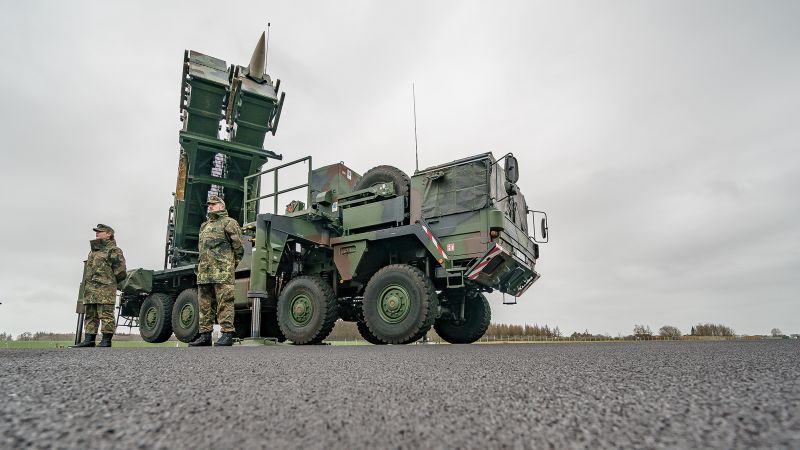Washington
CNN
—
Last October, a weeklong barrage of Russian missiles and kamikaze drones destroyed nearly a third of Ukraine’s power stations, plunging millions of Ukrainians into darkness ahead of winter and signaling a significant Russian tactical shift to target civilian infrastructure.
Back in Washington, the attacks were a game-changer. President Joe Biden was so outraged by the threat to civilians that he directed the Pentagon to find a way to get Ukraine America’s most advanced missile defense system, the Patriot – a move his administration had previously dismissed.
That directive, described to CNN by three administration officials, jump-started an effort at the Pentagon to identify and deliver a Patriot missile battery that the US could spare. New intelligence that Iran might be preparing to sell ballistic missiles to Russia also made the issue even more urgent and, two months later, the Pentagon announced a Patriot battery would be on its way to Kyiv.
The episode was one of several critical turning points in the yearlong security assistance effort, one that has been defined by the US providing Ukraine with increasingly sophisticated, powerful and longer-range weaponry – from shoulder-fired Javelins to HIMARS rocket launchers to M-1 Abrams tanks – even when Kyiv’s requests for that same weaponry had been previously denied.
It’s a process that US officials say has been driven by the Ukrainian military’s evolving capabilities, by its needs on the battlefield and by Russia’s evolving tactics. Diplomatic considerations, including Biden’s overarching goal of maintaining unity in the allied coalition, has also been a hallmark.
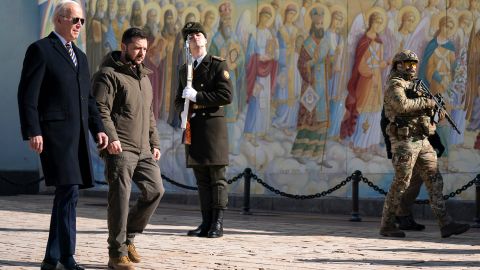
Yet for all the calculations and considerations, fundamental to the White House’s posture toward Ukraine is a pledge of clearly defined consequences Biden made directly to Russian President Vladimir Putin during a two-hour secure video teleconference on December 7, 2021, more than two months before the invasion.
Not only would the US follow through on sweeping sanctions, Biden also detailed his intent to provide more security assistance than any provided on a consistent basis to Ukraine since Russia’s illegal annexation of Crimea in 2014. Biden made the pledge “crystal clear,” a senior administration official recalled.
US officials acknowledge the scale of assistance during the first year of the war far surpasses anything they’d planned for. They also acknowledge how difficult the next year will be. Not only do the US and its allies have to keep up that assistance in the face of dwindling western stockpiles, officials say they are also encouraging Ukraine to change its battlefield tactics.
The hope is that Ukraine can use its arsenal of sophisticated weapons to transition away from the sort of pitched battle of attrition that has dominated much of the fighting to a style of mechanized maneuver warfare that uses rapid, unanticipated movements against Russia, sources familiar with their discussion said. The goal is to yield decisive battlefield gains to put Ukraine in a strong position to negotiate a peace, while also keeping an eye on limited munitions stockpiles with less artillery-intensive warfighting tactics.
At the same time, Ukraine has continued to press for newer and more sophisticated weapons, including longer-range missile systems and fighter jets, requests the US has denied previously. During Biden’s dramatic, surprise visit to Kyiv on Monday, Zelensky pressed Biden on both, hoping a personal appeal would finally sway him.
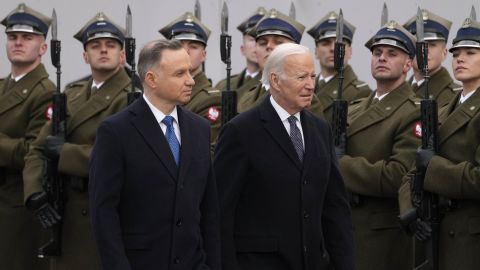
“There should be no doubt: Our support for Ukraine will not waver, NATO will not be divided, and we will not tire,” Biden declared during a speech in Warsaw on Tuesday. “President Putin’s craven lust for land and power will fail, and the Ukrainian people’s love for their country will prevail.”
The process of Ukraine requesting weapons from the US has come a long way since the harried first days of Russia’s invasion, when Ukraine’s government was pleading for anything they could get their hands on and the US worried about the prospect of Russia occupying the whole country – and hauling off valuable US equipment. Multiple regular channels now exist and all are filtered through the Pentagon.
In addition to lower-level military contacts, National security adviser Jake Sullivan, Defense Secretary Lloyd Austin and Chairman of the Joint Chiefs of Staff Gen. Mark Milley all speak directly with their counterparts multiple times a week.
Sullivan and Milley also hold regular joint calls with top Zelensky adviser Andriy Yermak and Gen. Valery Zaluzhny, the commander-in-chief of Ukraine’s armed forces. These calls give Sullivan and Milley a chance to get the latest reports from the battlefield and assess the Ukrainian military’s needs.
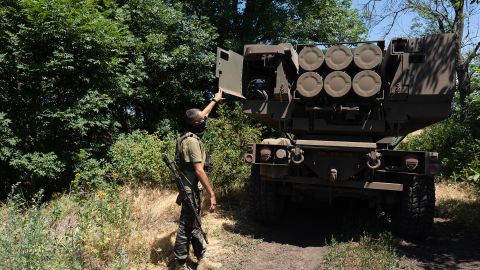
Ukrainian requests through these various channels are then funneled over to the Pentagon, where officials conduct rigorous analysis of the requests to assess the impact they will have on the battlefield, how quickly the Ukrainians can train and integrate the new weapons and the impact of transferring the weapons on US military readiness.
Even as the process has gotten more organized, with US equipment now often landing in Ukraine within days of Biden approving a security package, the urgency persists.
One senior State Department official said they had “never seen this bureaucracy work as fast as it’s working,” but added, “We all need to do more, faster.”
“We’re doing a lot; we’re doing as much as we can as fast as we can,” the official told CNN. “Is it enough? Probably not.”
Just as with Biden’s decision to provide a Patriot missile defense system, it has often taken a dramatic escalation or shift in battlefield conditions for the US to do more.
Until then, US officials had argued that the Patriot system was too complex and scarce to give to Ukraine. Russia’s targeted campaign on civilian infrastructure jettisoned those arguments.
“The president was obviously outraged about this, as we all were, and really pushed our teams, particularly at the Pentagon, to look at what we could do on our side to help them defend against this problem,” a senior administration official said.
Biden was also concerned that Russia’s targeted campaign on civilian infrastructure would leave Ukraine’s air defenses spread too thin, forcing Kyiv to make an impossible choice: deploy its limited air defense assets to protect its frontline troops, or its cities.
Biden not only directed his national security aides to work to get a Patriot battery to Ukraine, but urged officials to intensify efforts to provide Kyiv with more air defense capabilities.
At the White House, where Sullivan hosts a daily meeting of key National Security Council officials to coordinate the government-wide effort to support Ukraine, that launched an effort to get US allies to also get Ukraine more air defense capabilities.
Over the next few weeks, US officials worked with European allies to secure additional defensive systems and parts to help Ukraine build what one senior administration official described as a “patchwork” of air defenses, some of which includes using older Soviet-era equipment.
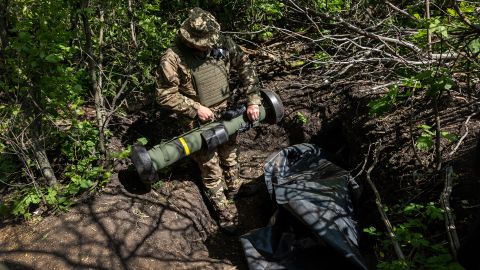
“We really went around the world and found for them, not only additional systems that other countries had and persuade them to transfer them, but parts,” the official said, allowing Ukraine to get non-operational S-300 systems back online.
Biden’s decision to provide a Patriot missile battery also motivated other countries to act: Germany followed suit with its own commitment to transfer a Patriot battery and the Netherlands has pledged Patriot components and missiles.
At key inflection points – from the decision to provide howitzers in April, HIMARS multiple rocket launchers in June and tanks last month – the ratcheting up of US security assistance has been matched or complemented by allies.
At each turn, US officials said the decision to go further was driven by evolving battlefield conditions and Ukrainians’ capabilities.
“At every stage of conflict, we have adapted to make sure the Ukrainians had what they needed to be successful – and they have,” a senior administration official said. “We have adapted, they have adapted.”
Perhaps the biggest challenge facing the West in its support for Ukraine as the war enters its second year is sheer logistics, and maintaining the pace of weapons and ammunition supplies to Ukraine as stockpiles dwindle.
“A lot of the ammunition stocks have been depleted in Europe,” Estonian Ministry of Defense Permanent Secretary Kusti Salm told CNN, and Europe’s current industrial capacities are limited in terms of how fast the ammo can be manufactured.
NATO Secretary General Jens Stoltenberg said earlier this month that Europe and NATO’s production capacity needs to be ramped up if the West is going to meet Ukraine’s needs.
“This has become a grinding war of attrition and therefore it’s also a battle of logistics,” Stoltenberg said. “The war in Ukraine is consuming an enormous amount of ammunition and depleting allies’ stockpiles. The current rate of Ukraine’s ammunition expenditure is many times higher than our current rate of production.”
Stoltenberg said the wait time for large caliber ammunition has increased from 12 to 28 months.
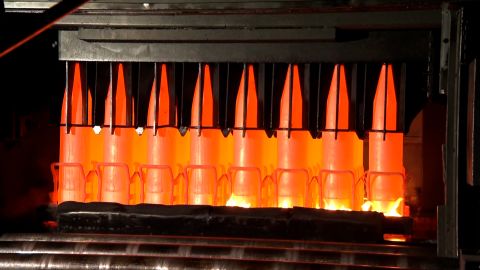
A senior European official said last week that the European Commission hopes to have a proposal ready by March for how to increase the production of ammunition across the bloc. The official noted that it is a complex problem, because ammunition production is expensive and will require that the defense industry upgrade its facilities.
The US has already embarked on a massive effort to re-arm, including plans from the Army to increase artillery shell production by 500%.
The Ukrainian military has instinctively wanted to fight an artillery war, US officials say, which involves firing a crushing amount of heavy artillery at the enemy’s defensive lines.
It is a strategy straight out of the Russian playbook. With its slow advance and defensive lines, Russia has tried to drag Ukraine into this kind of extended war, believing it can outlast the Ukrainians, officials said.
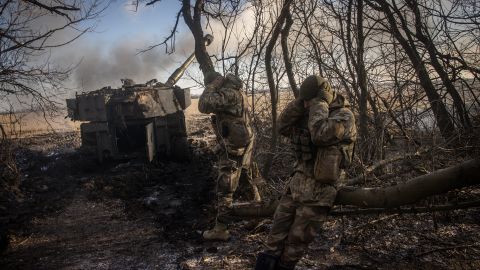
US officials have urged Ukraine to shift to a maneuver warfare style of fighting used by the US and other modern militaries – that is, fighting that uses rapid, unanticipated movements and a combination of different combat arms rather than relying too heavily on artillery.
The US began training Ukrainian forces on a modern, combined arms fighting strategy after Russia invaded Crimea in 2014. Though Russia’s invasion of Ukraine paused the efforts last year, they have restarted with a new sense of urgency. In late December, the US announced that it would dramatically expand the number of soldiers being trained on more sophisticated battlefield tactics, including coordinating infantry maneuvers with artillery support.
The first group of 635 Ukrainians training on this style of fighting wrapped up their course at Grafenwoehr Training Area in Germany last week, according to Pentagon press secretary Brig. Gen. Pat Ryder. The second group of more than 700 soldiers has already begun the five-week training course.
At Zelensky’s request, US officials have provided input on a 10-point peace plan Zelensky has been showcasing since November, National Security Council official John Kirby said last week.
The plan includes calls for the restoration of Ukraine’s state borders with Russia and the withdrawal of Russian troops, a special tribunal to prosecute Russian war crimes, and the release of all Ukrainian prisoners of war.
Officials told CNN that the plan is not necessarily a starting point for negotiations with Russia. Rather, it represents Kyiv’s vision of an ideal post-war order, one that can hopefully convince Ukraine’s allies to maintain their support for as long as it takes to get there.
The plan’s points “are meant to be principles of what a peace is going to have at its core,” a senior State Department official told CNN.
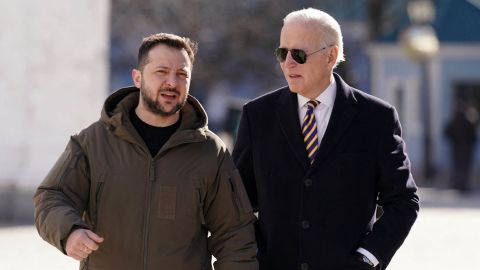
“I think strategically the allies are getting to the realization that this is going to be a longer war,” said Salm, the Estonian defense secretary. “It’s going to be an extremely costly war and in order to manage this strategy, you need to have an end goal.”
Zelensky’s room to maneuver in terms of what he is willing to accept has “gotten a little smaller” as Russia’s atrocities have grown, however, the senior State Department official said.
Zelensky has repeatedly ruled out ceding any territory to Russia to try to get them to withdraw. A decisive Ukrainian victory, with western help, is the only solution, he told the BBC earlier this month — otherwise, Russia will “keep coming back,” he said.
“Of course, modern weapons speed up peace,” he added. “Weapons are the only language Russia understands.”
The senior State Department official said the US understands this position. An end goal “has to be something that any democratically elected leader in Ukraine can sell to his or her public,” the official said. “But I think he’s committed to get there.”
The bottom line, though, is that Putin has still shown no willingness to negotiate an end to the war, US and western officials say – or even that he would be willing to accept anything less than a full overthrow of Kyiv.
“There are no signs that Putin’s war aims have changed” since last February, the senior European official said.

